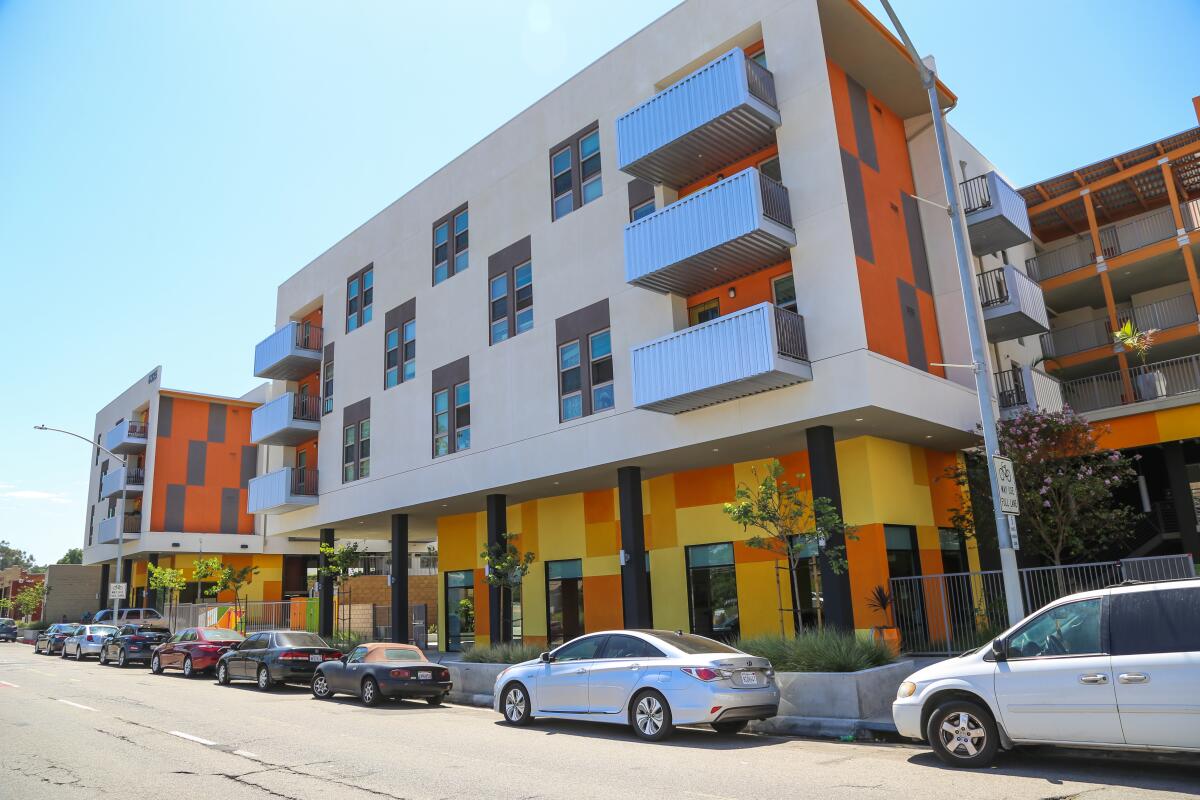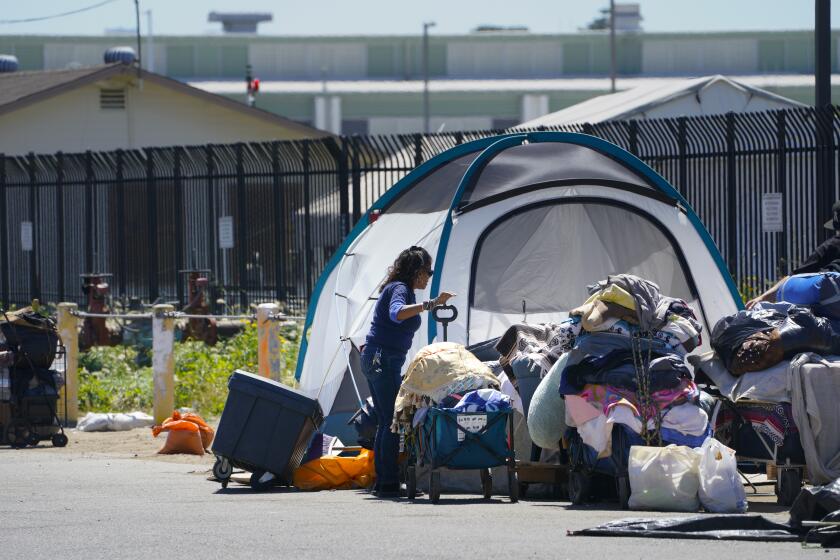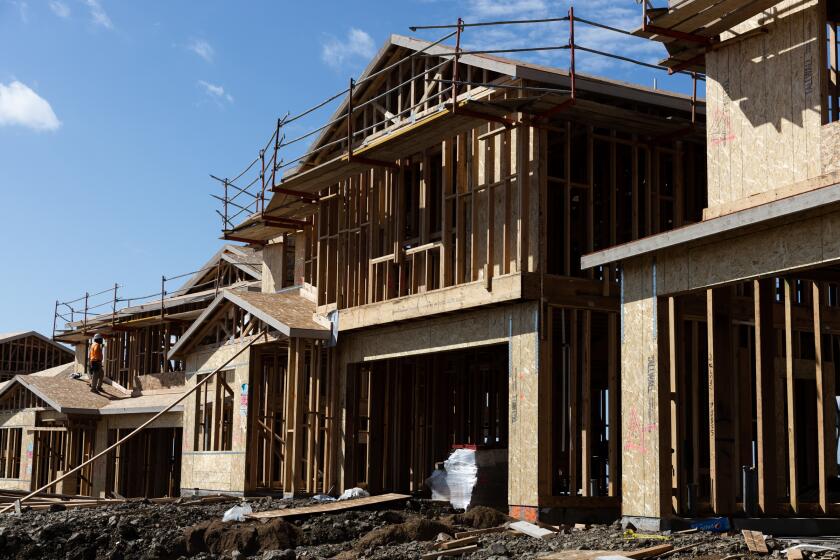Column: Repeal of California’s anti-public housing measure should be a sure thing. It isn’t

State constitutional amendment was passed in 1950 amid racist overtones
For decades, lawmakers in Sacramento have been trying to scrub the California Constitution of a vestige from a grim chapter in state history.
Three times they’ve failed, but are trying once again.
Last week, the Secretary of State’s Office announced a ballot measure for the March 5, 2024, primary to repeal a long-ago addition to the state Constitution that required a community vote on public housing projects. Last year, the Legislature unanimously agreed to put the repeal before voters.
On its face, Article 34 may seem like simply allowing local control over a land-use decision.
But the campaign behind the 1950 initiative had none-too-subtle racial overtones aimed at keeping lower-income people — primarily people of color — out of White neighborhoods. There was a dash of anti-socialism in promotion of the constitutional amendment as well.
California has evolved since then and lawmakers have maneuvered over the years to reduce the impact of Article 34, even if they haven’t been able to get rid of it. Still, the measure stunted development of homes for lower-income residents over decades and continues to make it more difficult to build them.
That’s particularly relevant today considering high home prices in California and the dearth of housing that people of lesser means can afford. Growing demands that government do something about that could bolster support for repealing the measure.
California voters by wide margins rejected proposals to repeal the provision, or essentially gut it, in 1974, 1980 and 1993. In that last vote, San Diego County mirrored the statewide results with nearly 60 percent of voters opposed.
Legislators were heading toward putting another repeal on the ballot in 2020, but they worried there wouldn’t be adequate financial support for the campaign and temporarily backed off.
Regardless of how the Article 34 got into the Constitution, it’s never wise to underestimate the appeal of local control in politics. In recent years, some residents and officials have expressed frustration with the Legislature’s willingness to pass bills infringing on local decision-making in land use.
It’s an interesting choice to put the repeal — approved by the Legislature as Senate Constitutional Amendment 2 — on the ballot in next year’s primary, which has been moved up to March for the presidential election as has been done in the past.
The Republican presidential race for now looks to be competitive, while the Democratic contest does not — assuming President Joe Biden runs for re-election as he has signaled.
That has the potential of a higher level engagement from conservative voters who may not be as game as Democrats to vote for repeal. But then, in the November 2024 general election, the measure could get lost amid other statewide and local ballot measures, even though a stronger Democratic turnout would be expected.
Local votes on specific low-income housing projects aren’t as frequent as they once were. When private developers designate part of a housing project for low-income residents, or housing is funded by federal or state tax credits — common practices these days — a vote is not required, according to Liam Dillon of the Los Angeles Times, who has covered the issue extensively.
Further, The Associated Press noted state lawmakers adjusted the definition of “low-rent housing project” to include developments where more than 49 percent of the units are set aside for lower-income residents. Projects with less don’t require an election.
Court rulings also have allowed cities to seek approval of a large number of public housing units in years to come instead of holding elections for individual projects.
In 2016, the city of San Diego put a measure on the ballot to raise the cap on affordable housing units to 38,620. The cap had been 10,500, but the city was closing in on reaching it. Measure M was approved by more than 66 percent of the voters, though it did not obligate the city to build or finance the homes.
The U.S. Department of Housing and Urban Development considers housing to be affordable when it costs no more than 30 percent of household monthly income (including rent or mortgage, utilities and other housing-related costs).
Article 34 may not be as strong as it once was, given the legislative and legal changes, but repealing it wouldn’t just be symbolic.
The measure caused California to miss out on a lot of the federal government’s growing public housing funding in the 1950s and 1960s, Cynthia Castillo, a policy advocate for the Western Center on Law and Poverty, told the AP.
“It has tied our hands in exploring solutions to the affordable housing crisis and homeless crisis in a sense by taking public housing off the table,” Castillo said.
A lot was behind approval of the proposal in 1950. The measure followed a state Supreme Court ruling that residents in Eureka could not hold a referendum on a public housing project because it involved federal dollars.
In a deep historical dive, Dillon of the Times wrote that the California Real Estate Association, the predecessor of today’s California Association of Realtors, argued that taxpayers should be able to vote on low-income housing because they were publicly funded infrastructure like schools or roads.
Newspaper ads paid for by the association also blamed “minority pressure groups” for pushing public housing. At the time, the organization’s code of ethics included a provision barring agents from integrating neighborhoods on the basis of “race or nationality” if doing so would be “clearly detrimental to property values,” according to Dillon.
Meanwhile, an official with the group promoted the ballot measure in a newsletter, writing that to stop “socialism that is gnawing at the vitals of America from within, the ballot box is your weapon...”
This was early in the Cold War with the Soviet Union and the U.S. had just gone to war with communist North Korea, which was backed by China.
In 1971, the U.S. Supreme Court upheld Article 34. In the majority opinion, Justice Hugo Black wrote the provision didn’t violate the U.S. Constitution because, among other things, it requires “referendum approval for any low-rent housing project, not only for projects which will be occupied by a racial minority.”
It’s far from certain the fourth time will be the charm for repeal, but attitudes and California politics clearly have changed over time.
As it did in 1993, the California Association of Realtors supports removing Article 34 from the state Constitution.
Get Essential San Diego, weekday mornings
Get top headlines from the Union-Tribune in your inbox weekday mornings, including top news, local, sports, business, entertainment and opinion.
You may occasionally receive promotional content from the San Diego Union-Tribune.












